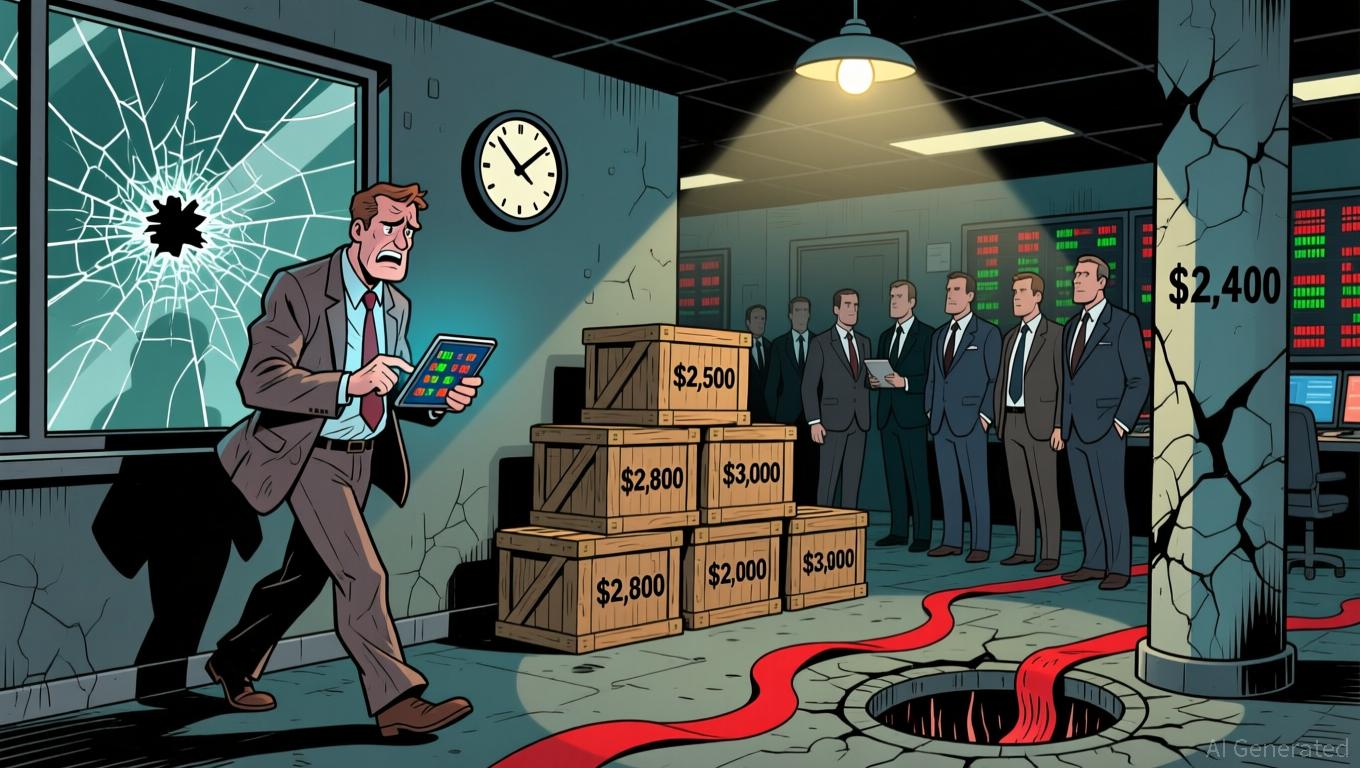ECB Raises Concerns Over Systemic Threats While Canada Develops Stablecoin Rules
- Canada's 2025 budget introduces stablecoin regulations requiring reserves, redemption policies, and risk frameworks, overseen by the Bank of Canada with $10M allocated for implementation. - ECB warns $280B stablecoin market risks destabilizing finance by draining bank deposits, triggering reserve asset fire sales, and threatening U.S. Treasury markets during "runs." - Industry advocates like Coinbase argue reserve-backed stablecoins enhance stability, while firms like Republic Technologies invest $100M i
Stablecoins are increasingly being regarded as potential "central business digital currencies," with their future shaped by evolving regulations and shifting market forces. Recent actions by Canadian authorities and cautionary statements from the European Central Bank (ECB) underscore both the rising institutional attention on stablecoins and the potential threats they pose to the stability of the global financial system.
Canada's budget for 2025, which has received parliamentary approval, introduces a regulatory framework for stablecoins. This framework sets out requirements for issuers, including maintaining reserves, establishing transparent redemption processes, and implementing risk management protocols. The Bank of Canada will supervise these efforts, with a $10 million budget over two years to facilitate implementation. While inspired by the U.S. GENIUS Act, Canada’s policy differs by not outright prohibiting unlicensed issuers, instead mandating registration to ensure compliance. This regulatory certainty could encourage companies to utilize stablecoins for payments, especially in international trade, where their stability and efficiency are considered beneficial
On the other hand, the ECB has reiterated its concerns that stablecoins could undermine financial stability. In a report published in November 2025, the ECB cautioned that stablecoins might divert retail deposits from traditional banks, thereby weakening a key source of funding and heightening systemic risk.
Differing opinions are intensifying the ongoing debate between regulatory caution and technological advancement. While the ECB and Canadian authorities prioritize risk mitigation, industry advocates maintain that fully backed stablecoins can actually strengthen financial stability.
At the same time, corporate developments point to increasing adoption of stablecoins. Republic Technologies, a company specializing in blockchain infrastructure,
The ongoing discussion about the future of stablecoins centers on finding the right balance between their practical benefits and the need for systemic protections. The regulatory steps taken by Canada and the warnings from the ECB exemplify the challenge of encouraging innovation without compromising financial stability. As stablecoins develop further, their uptake by both businesses and governments will likely depend on whether regulatory frameworks can address risks without hindering progress.
Disclaimer: The content of this article solely reflects the author's opinion and does not represent the platform in any capacity. This article is not intended to serve as a reference for making investment decisions.
You may also like
Ethereum Updates: Ethereum Drops to $2,800, Prompting Surge in Demand for ZKP's Hardware-Based Presale
- Ethereum's price fell below $2,800, triggering $6.5M liquidations and testing critical support levels amid declining on-chain demand metrics. - Institutional players like BitMine accumulated 3.62M ETH (~$10.4B) despite the selloff, signaling long-term bullish conviction. - ZKP's hardware-driven presale gained traction with $17M in ready-to-ship Proof Pods and Miami Dolphins partnership for privacy-focused sports analytics. - Mutuum Finance's $19M DeFi presale and ZKP's auction model with $50K wallet caps

Vitalik Buterin Supports ZKsync: What This Means for Layer 2 Scaling
- Vitalik Buterin endorsed ZKsync in late 2025, highlighting its "underrated and valuable" work alongside the Atlas upgrade achieving 15,000 TPS and $0.0001 fees. - ZKsync's zero-knowledge rollups and EVM compatibility enabled institutional adoption by Deutsche Bank , Sony , and Goldman Sachs for cross-chain and enterprise use cases. - The Fusaka upgrade aims to double throughput to 30,000 TPS by December 2025, positioning ZKsync to compete with Polygon zkEVM and StarkNet in Ethereum's Layer 2 landscape. -

The ZK Atlas Enhancement: Revolutionizing Blockchain Scalability?
- ZKsync's 2025 Atlas Upgrade achieves 15,000–43,000 TPS with sub-1-second finality, addressing Ethereum L2 scalability bottlenecks via Airbender proofs and modular OS. - DeFi protocols like Aave and Lido leverage ZKsync's $0.0001/tx costs to unify liquidity, while Deutsche Bank and Sony adopt its trustless cross-chain infrastructure for compliance and transparency. - ZK token surged 150% post-upgrade, with TVL hitting $3.3B and analysts projecting 60.7% CAGR for ZK Layer-2 solutions by 2031 amid instituti

XRP News Update: XRP ETFs Spark Optimism—Is $1,115 Within Reach?
- XRP's price surge to $2.20 is driven by ETF launches, with $422M inflows from Franklin Templeton and Grayscale. - Technical indicators suggest a potential $2.50+ rally if support at $1.84 holds, with long-term forecasts reaching $26.50 by 2030. - Institutional adoption of Ripple's ODL and Ripple USD's $1B+ market cap highlight growing utility beyond remittances. - Regulatory clarity post-SEC ruling and macroeconomic factors remain critical for XRP's $1,115 potential in ultra-bullish scenarios.
